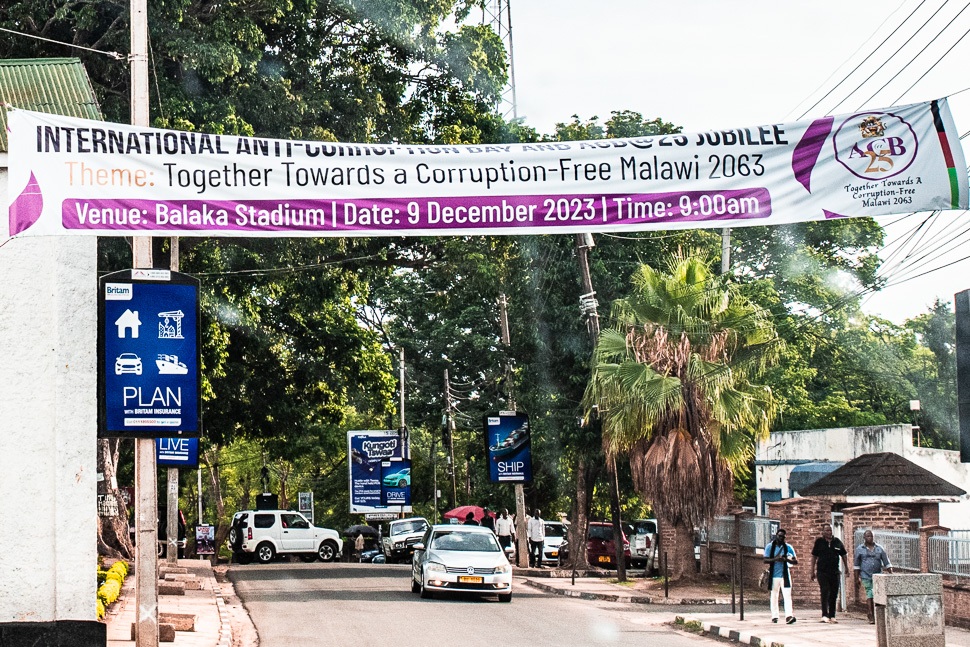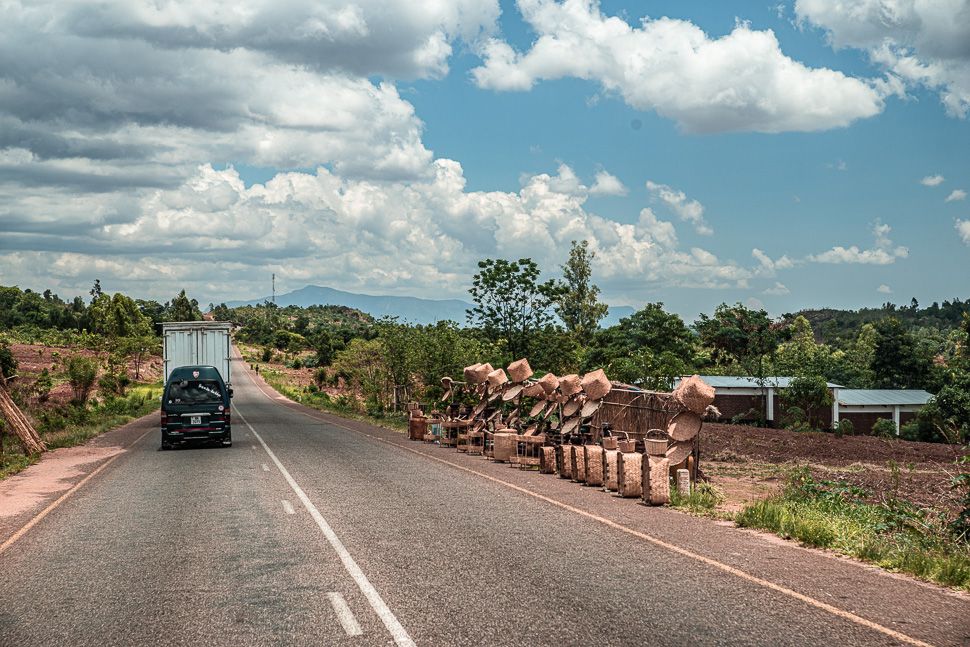


After crossing the border at Mwanza, the landscape was dotted with little hills and everything was so very green, it felt like spring in Europe. Here it was just the end of the dry season. The first town we reached was Blantyre, the capital of the south of Malawi.

Blantyre was founded in 1876 through the missionary work of the Church of Scotland. It was named after Blantyre in Scotland, the birthplace of David Livingstone.


We had spent the night at the Baobab Backpackers in a good area of Blantyre, just that the camping was at their parking, but good enough for our repair and a calm night.

From 1881–1898 the mission at Blantyre was run by David Clement Scott, who was famous not only for building the St Michael and All Angels Church, between 1888 and 1891, but also for his Encyclopaedic Dictionary of the Mang’anja Language. The church was built from bricks by a team of local workmen with no knowledge of European architecture or building techniques. It looks like they did a very good job, the beautiful church is still standing and was opened for us to visit.






In Blantyre, we visited the Mandala or Old manager’s house, built in 1882, from sun-dried grass, mud and bricks, which makes it the oldest European building in Malawi. Early European settlers used the house and fortified yard as a laager in times of armed conflicts. Defensive walls and towers extended from the main building.
The company Mandala was founded in 1878 by the African Lakes Corporation following the settling of missionaries in Blantyre two years earlier. Until the end of the 19th century the Old Manager’s House was the centre of commerce for the company. The head office of ALC was in Glasgow and Mandala was their chief office in Africa.
Today, there is a lovely café under big trees and at the old house, local art and curios are sold.

Our next stop was at the Museum of Malawi. We were warned not to expect too much, but we always find it entertaining to visit African museums. The exhibits range from Stone Age tools to old banknotes, traditional musical instruments and artefacts, and documents relating to the slave trade and Malawi’s independence.



Gule Wamkulu was a secret cult, involving a ritual dance practiced among the Chewa in Malawi, Zambia, and Mozambique. It was performed by members of the Nyau brotherhood, a secret society of initiated men. Within the Chewa’s traditional matrilineal society, where married men played a rather marginal role, the Nyau offered a means to establish a counterweight and solidarity among men of various villages. Nyau members still are responsible for the initiation of young men into adulthood, and for the performance of the Gule Wamkulu at the end of the initiation procedure, celebrating the young men’s integration into adult society. That reminded us, that we had seen a group of masked young men on our first visit to Malawi.

Outside the building there was an old locomotive from 1902, Malawi’s first fire engine, a bus from Nyasaland and a parts of an hydroelectric power plant.


From Blantyre we continued to Zomba, which lies at the bottom of a plateau, which was once covered with indigenous forest. Today there are mostly pine plantations or deforested areas. But on the slopes of the plateau, we found a great place to spend a couple of nights at Casa Rossa. This lodge and restaurant is run by an Italian couple and we could enjoy pizza, pasta and gelato in the best quality – we loved it!



We visited the Botanical Garden in Zomba, before driving past the mountains to Liwonde, where we want to visit the national park at the river Shire.
